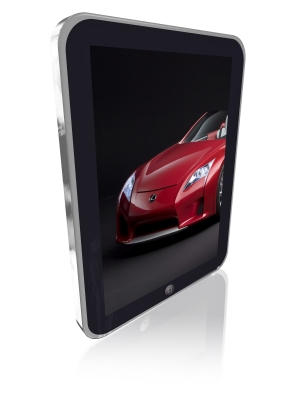-
- 21
Dec - (0)
Mobile Healthcare
A few years ago, I worked with a behavioral health hospital in Rhode Island to improve their Electronic Health Record (EHR), and the thing that impressed me the most was staff acceptance of carrying wireless laptops around the ward as they were treating consumers. They were constantly connected to the EHR, and this design not only encouraged, but enforced collaborative documentation of services with the consumers.

According to Ken Congdon, editor in chief of Healthcare Technology Online, there has been a resurgence of interest in this sort of technology, adapted to the iPad. Congdon speaks from a physical health perspective, and perhaps I can add to his research angled toward mental health and addiction treatment.
I approve of the iPad. PC guys like me and the Apple brigade have kidded each other about which is better, and a lot of us PC guys are starting to see real value in Apple’s products.
I’ve gone on the record many times as a supporter of collaborative documentation, and this technology makes that sort of treatment planning and documentation easer. The keyboard is as good as non-existent, so drop down dictionaries, checkboxes and radio (yes/no) buttons are pretty much a requirement for documentation. That speeds up the process while keeping the consumer involved…plus, who doesn’t like a gadget? Most consumers would at least be curious about the using the iPad. Imagine how easy it would be to assure a note addressed a treatment plan item by handing the iPad to the consumer and covering that first thing in a session. Then you’d have the bulk of your session (when the real work happens) without touching the little computer. After the discussion, the professional and consumer would summarize and record the next steps on the iPad, especially if the software has been creatively modified to suit this process. I think a number of consumers’ curiosity would help move this technology into the mainstream and improve the documentation, involvement and possibly treatment.
The Information Technology (IT) department or project manager for the agency’s EHR would need to turn attention to the way documentation is used, modifying some screens and better fitting them to work with the iPad. Since the trend is toward developing software to work in an Internet browser, tools that bridge the gap between the Microsoft and Apple technologies are already available.The project is certainly worth looking into.
Mental health professionals have been slow to adopt the EHR, and by tackling software design and implementation projects like this, the EHR’s acceptance by those same professionals might come along more quickly.
The technology does raise some concerns. Security needs to be a priority. Any time wireless technology is used, the passwords and firewalls need to be in tip-top shape. That’s not a problem, IT departments specialize in this, and if they need help, there are plenty of security experts and lots of security training in the world today as a result of hackers and virus attacks.
When a professional uses primarily data dictionaries, check boxes and radio buttons to complete an assessment, treatment plan or progress note, there is a very real danger of cookie-cutter documentation. For auditors, this approach to documentation is a hot-button and alerts them to review it very carefully with this regard. Again, this has been resolved by many software companies serving mental health and addictions (let me know if you want some suggestions for companies who have creative solutions). The note could be set up with a required “append” function that would alert professionals to add some narrative once they get back to their desk. Not a big deal, just an opportunity to be creative.
Once again, technology makes the world a more interesting, if not brighter, place.
- 21

Leave a Reply